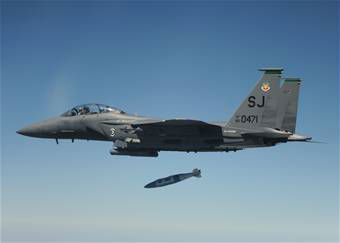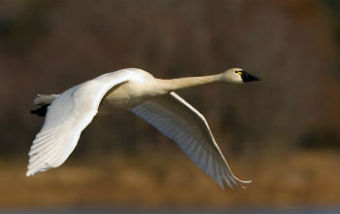ELIZABETH CITY — Land-based wind power projects in Beaufort and Pasquotank counties are still in the works, despite considerable challenges that have raised doubts about their future.
Progress on a third wind project in Eastern North Carolina that has not been approved yet by the state has also stalled, and there is a new proposal to build an innovative bird-friendly wind power demonstration project in Dare County.
Supporter Spotlight
A utility-scale wind farm planned near Pocosin Lakes National Wildlife Refuge, known as the Pantego Wind Project, has raised strong objections from military officials over conflicts with flight paths and radar use in training airspace.
Some environmental group said that the spinning blades of the 49 wind turbines, which would stand nearly 500 feet in the air, also threatened thousands of tundra swan and snow geese that winter at the refuge. Mosquito-loving bats and federally-protected bald eagles would also be threatened.
But the Chicago-based wind energy company Invenergy isn’t ready to throw in the towel on the $160 million project. In a recent statement, the company said that the project site is undergoing “a thorough reconsideration.”
 |
 Training F-15s and migrating tundra swan have stymied the proposed Pantego Wind project. Photos: F-15, Seymour Johnson Air Force Base; tundra swan, Julia Flanagan, Chincoteague National Wildlife Refuge |
“Invenergy is committed to developing projects compatible with existing local military activity,” the statement said. “We therefore continue to communicate with public officials and military representatives to ensure we help maintain the stability of bases located in eastern North Carolina.”
A special mitigation oversight team, formed in collaboration with the Department of Defense, will explore alternatives to the original design with Seymour Johnson Air Force Base and other stakeholders, according to the statement.
Supporter Spotlight
Documents in the Pantego Wind application approved by the state Utilities Commission on March 8, 2012 included a copy of a July letter to Gov. Beverly Perdue from the base commander Col. Jeanne M. Leavitt that said the wind turbines would create hazards for the low-flying F-15E air crews that train at the Dare County Bombing Range near East Lake.
But Leavitt did not offer any encouragement for the company.
“I believe wind farm development in any part of eastern North Carolina,” she wrote, “has the potential to harm the training missions of Seymour Johnson Air Force Base and potentially other Defense Department users of airspace near planned projects.”
A second struggling wind project proposal in the region, planned on 20,000 acres near Elizabeth City, has gotten a second wind, so to speak, with the federal government’s reauthorization last month of the wind energy tax credit. But forward movement remains stymied by the difficulty finding an entity to purchase power.
“The extension of the tax credits was good news for us,” said Paul Copleman, spokesperson for Iberdrola Renewables, a global wind energy company in Portland, Ore. “Whether it will directly impact (this project), it’ll take more than extension of the production tax credits.”
The Desert Wind Power Project, named for the region’s flat terrain, would have 150 wind turbines that provide 300 megawatts of power, enough electricity for 55,000 to 70,000 houses. The site of the $600 million project, approved by the state in May 2011, straddles Perquimans and Pasquotank counties.
According to Iberdrola, construction would create more than 400 jobs, payments to local landowners would be up to $1 million a year for the project life, tax revenue would be about $750,000 annually, and the facility would hire 15-20 full-time workers.
“We are actively pursuing opportunities to secure a long-term power purchase agreement for this project,” Copleman said. “We would consider it is a project that we are actively developing.”
North Carolina provides 35 percent tax credit for renewable energy facilities, and the federal government provides 30 percent investment tax credit. In 2007, the N.C. General Assembly approved a law requiring that 12.5 percent of the energy produced in the state be generated from renewable energy resources by 2025. Studies have shown that Eastern North Carolina has some of the best wind energy potential not only in the state, but on the entire East Coast.
Another proposed Invenergy project, called Hales Lake Wind Farm, is also being hindered by military concerns even before its application has reached the Utilities Commission.
Located in Currituck and Camden counties, Hales Lake would include 60 to 80 wind turbines and produce up to 180 megawatts of power. The $250 million project would create more than 100 jobs during construction and would generate enough power for more than 25,000 homes, according to the company.
But the Navy has expressed concern that the turbines would affect its radar system in Chesapeake, Va., and the Coast Guard has issues with the impact of the turbines on the operations at Coast Guard Air Station in Elizabeth City.
According to a recent statement from Invenergy, the turbines are undergoing review by the Federal Aviation Administration to determine potential obstruction of air navigation and radar and communication facilities.
 Paul Copleman |
“The FAA review — and associated consultation with the Department of Defense and the Department of Homeland Security — of course will take time to complete,” the statement said. “Accordingly, Invenergy is coordinating the timing of further project development pending ongoing discussions in this regard with Defense and Homeland Security officials.”
While the developers grapple with ways to salvage the projects, a new bird-friendly wind power and solar energy demonstration project has been proposed in Dare County at Dominion Power’s existing facility in Kitty Hawk.
If it meets with town approval, the three-year research project would be one of the first to study the effects of coastal salt air and intense weather conditions on renewable energy production, said Sara Cosby, alternative energy solutions project manager for Dominion Power.
The Outer Banks’ seasonal spikes in energy use as well as its strong and steady winds also add to the value of the research.
The project would include four relatively short 17-kilowatt wind turbines — 70 foot maximum height —a 5-kilowatt solar panel array and a battery storage system.
It would operate as its own private micro-grid, essentially creating alternative power for the facility’s own use, Cosby said.
Three of the turbines will be an innovative design that is smaller and has a vertical axis, spinning “almost like a cake hand mixer,” she said. “Because of the way they are shaped, birds view them almost as a solid object, so they are less likely to be associated with bird or bat strikes.”
Since it is a short-term, experimental project — although the equipment will remain for its lifespan — Cosby said it was not worth applying to the state to also discharge power into the grid.
“It will always be able to offset the energy at the facility,” she said. “So that facility will be pulling less energy from the grid than it would otherwise.”
Cosby said the concept of microgrids, where mini-communities like college campuses and military bases generate their own power, is expected to expand.
“The way microgrids will be used in the future is as miniature self-contained utility grids,” she said. “They provide resiliency and backup in extended outages and day-to-day use of the resource as well as in peak usages.”
The town voted this week to amend its zoning law to allow the multiple turbines. The project still must be approved by the planning board and the town board.








